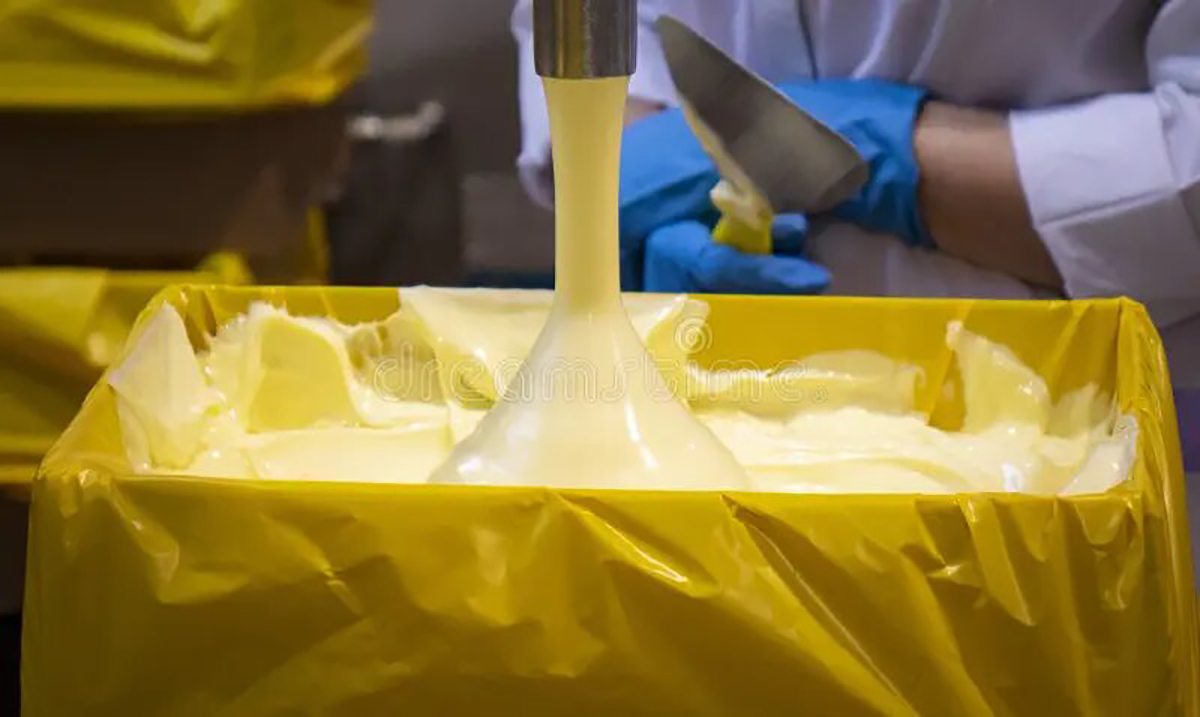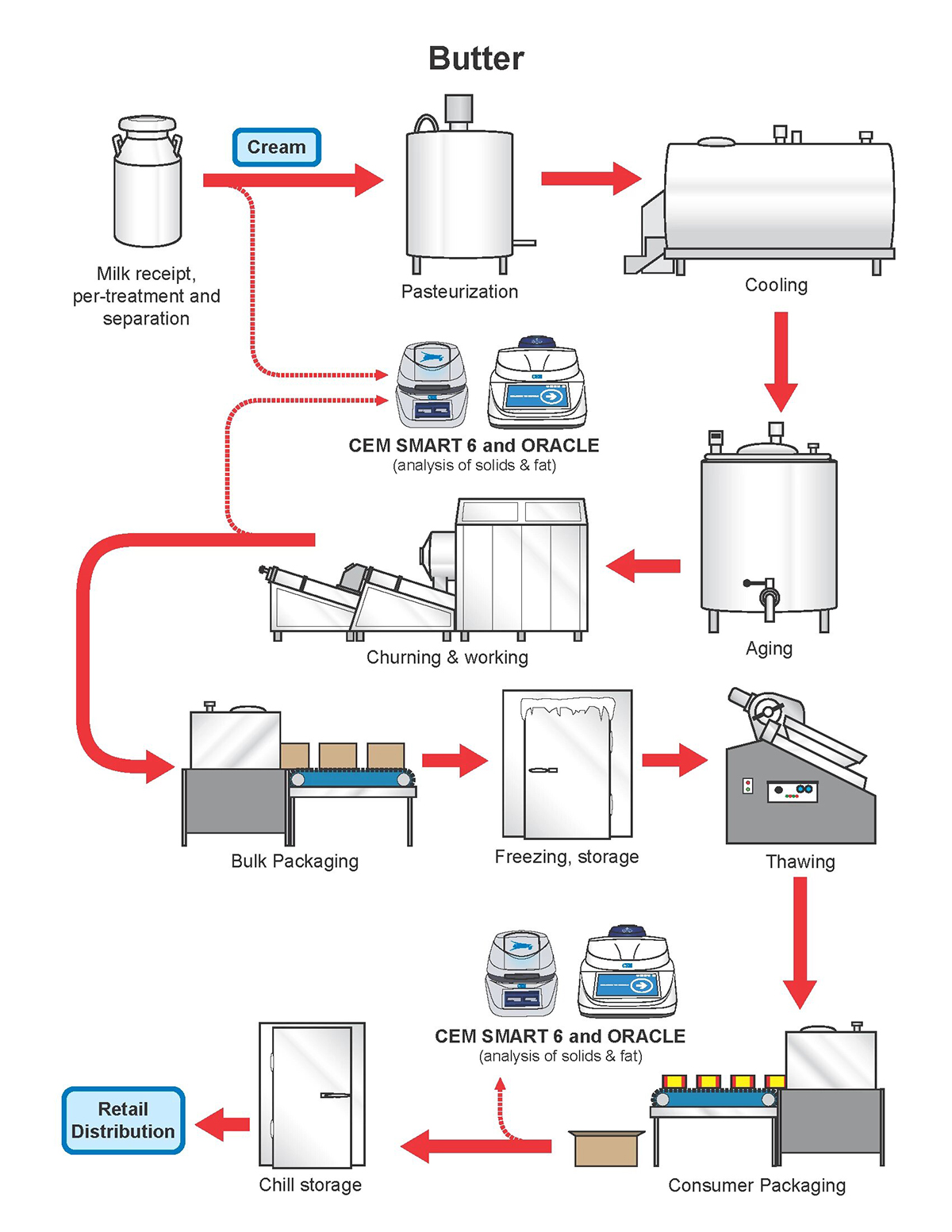The Application of Scraped Surface Heat Exchangers in Butter Processing
Scraped surface heat exchangers play a crucial role in butter processing, especially for handling high-viscosity, easily crystallizable or shear-sensitive materials. The following is an analysis of their specific applications and advantages:
1. Core Application Stages
• Rapid Cooling and Crystallization Control
During butter processing, milk fat needs to be rapidly cooled at a specific temperature to induce the formation of β' crystals (a key factor for fine texture). The scraped surface heat exchanger, with its high heat transfer efficiency and continuous scraping of the walls, prevents local overheating or uneven cooling during fat crystallization, ensuring crystallization stability.
• Phase Transition Treatment
In the emulsification stage (such as converting cream to butter), it is necessary to quickly pass through the phase transition temperature range (typically 10-16°C). The strong mixing effect of the scraped surface heat exchanger accelerates heat transfer, avoids local temperature lag, and improves phase transition efficiency.
• Handling of High-Viscosity Materials
The viscosity of butter significantly increases in the later stages of processing (up to 10,000 cP or more). The scraper design effectively conveys the material, avoiding the clogging problems that occur in traditional tube heat exchangers due to high viscosity.
2. Technical Advantages
• Adaptation to Viscosity Changes
The scraper rotor automatically adjusts its speed according to the material viscosity (e.g., from 500 rpm for liquid cream to 50 rpm for solid butter), ensuring uniform heat exchange.
• Prevention of Fouling and Degradation
Butter is prone to protein denaturation or fat oxidation at high temperatures. The short residence time (typically <30 seconds) and precise temperature control (±1°C) of the scraped surface heat exchanger reduce the risk of thermal damage.
• Hygienic Design
Compliant with food-grade standards (such as 3-A certification), it can be equipped with a CIP (Clean-In-Place) system to prevent microbial growth.
3. Typical Process Parameters
Stage Temperature Range Heat Exchanger Configuration Key Objectives
Cream Pre-cooling 45°C → 20°C High speed (300-500 rpm) Rapid cooling to the crystallization starting point
Crystallization Stage 20°C → 12°C Low speed (50-100 rpm) Promote β' crystal formation and prevent β crystal formation
Final Conditioning 12°C → 8°C Low speed + high shear Adjust hardness and extensibility
4. Comparison with Other Heat Exchanger Types
• Plate heat exchangers: Suitable for low-viscosity stages (such as milk pre-treatment), but unable to handle high-viscosity butter.
• Tube heat exchangers: Require high-pressure pumps and are prone to causing structural shear damage to butter.
• Advantages of scraped surface: The overall heat transfer coefficient (500-1,500 W/m²·K) is much higher than that of static equipment, and energy consumption is approximately 15% lower than that of screw-type heat exchangers.
5. Industry Case Study
After a European butter manufacturer adopted scraped surface heat exchangers:
• Crystallization time was reduced by 40% (from the traditional 8 hours to 4.5 hours);
• The rate of product texture defects dropped from 5% to 0.8%;
• Energy consumption decreased by 22% (due to improved heat exchange efficiency).
Summary
The scraper heat exchanger solves the core problems of high viscosity, crystal control and thermal sensitivity in butter processing through dynamic wall scraping and controllable shearing. It is a key equipment in modern continuous butter production lines. When selecting, the heat exchange area, scraper material (usually PTFE or food-grade stainless steel) and the speed adjustment range should be focused on.
刮板式换热器在黄油加工中的应用
刮板式换热器在黄油加工中扮演着关键角色,尤其适用于高黏度、易结晶或对剪切敏感的物料处理。以下是其具体应用及优势分析:
1. 核心应用环节
- 快速冷却与结晶控制
黄油加工中,乳脂肪需在特定温度下快速冷却以诱导β'晶型形成(质地细腻的关键)。刮板式换热器通过高传热效率和连续刮壁,防止脂肪结晶过程中局部过热或冷却不均,确保结晶稳定性。 - 相转变处理
在乳化阶段(如将奶油转化为黄油),需快速通过相变温度区间(通常10-16℃)。刮板式换热器的强烈混合作用可加速传热,避免局部温度滞后,提高相变效率。 - 高黏度物料处理
黄油在加工后期黏度显著升高(可达10,000 cP以上)。刮板设计能有效输送物料,避免传统管式换热器因黏度导致的堵塞问题。
2. 技术优势
- 适应黏度变化
刮板转子可根据物料黏度自动调节转速(如从液态奶油的500 rpm降至固态黄油的50 rpm),确保换热均匀。 - 防止结垢与降解
黄油易在高温下发生蛋白质变性或脂肪氧化。刮板式换热器的短停留时间(通常<30秒)和精确温控(±1℃)减少热损伤风险。 - 卫生设计
符合食品级标准(如3-A认证),可配备CIP(原位清洗)系统,避免微生物滋生。
3. 典型工艺参数
| 环节 | 温度范围 | 换热器配置 | 关键目标 |
| 奶油预冷 | 45℃→20℃ | 高转速(300-500 rpm) | 快速降温至结晶起始点 |
| 结晶阶段 | 20℃→12℃ | 低速(50-100 rpm) | 促进β'晶型,避免β晶型 |
| 最终调质 | 12℃→8℃ | 低速+高剪切 | 调整硬度与延展性 |
4. 对比其他换热器类型
- 板式换热器:适合低黏度阶段(如牛奶预处理),但无法处理高黏度黄油。
- 管式换热器:需配合高压泵,易导致黄油结构剪切破坏。
- 刮板式优势:综合传热系数(500-1,500 W/m²·K)远高于静态设备,且能耗比螺杆式换热器低约15%。
5. 行业案例
欧洲某黄油制造商采用刮板式换热器后:
- 结晶时间缩短40%(从传统8小时降至4.5小时);
- 产品质构缺陷率从5%降至0.8%;
- 能耗降低22%(因换热效率提升)。
总结
刮板式换热器通过动态刮壁和可控剪切,解决了黄油加工中高黏度、结晶控制和热敏性的核心难题,是现代连续化黄油生产线的关键设备。选型时需重点关注换热面积、刮刀材质(通常为聚四氟乙烯或食品级不锈钢)与转速调节范围。
Post time: May-26-2025


